Matyushin's first wife. In 1885, Matyushin married the daughter of an Austrian citizen, Maria Ivanovna Patzak. From this marriage there were four children – three daughters and a son. Since I am writing about visiting Matyushin's house, there was nothing else about the first wife there. This is understandable. In this house Matyushin lived with the second and …
Matyushin's house. Part 3
Matyushin's first wife.
In 1885, Matyushin married the daughter of an Austrian citizen, Maria Ivanovna Patzak. From this marriage there were four children – three daughters and a son.
Since I am writing about visiting Matyushin's house, there was nothing else about the first wife there. This is understandable. Matyushin lived in this house with his second and third wife.

Matyushin's second wife.
They met in the workshop of Zionglinsky in the 1900s.
Matyushin himself wrote about this meeting:
I remember the first time I saw, found her. That day there were few workers and suddenly I saw a small creature of the most modest appearance. Her face was unforgettable. Elena Guro painted Genius (from plaster). I have never seen such a complete union of the creator with the observed.
In December 1904 Guro became Matyushin's wife.
Remember that I take pictures as best I can, dodging glare? That's why these weird pictures.
The elderly caretaker sympathetically said that if the lights were turned off, it would be too dark. And he's right. The windows are small, and the day turned out to be gray.

Elena Guro, poet and painter, graphic artist, book illustrator, was born on January 10, 1877 in St. Petersburg. Her father was a lieutenant general, came from a noble family.
Well, this is so, about the noble family, by the way.
It was with Guro that Matyushin settled in 1912 in a house on Pesochnaya.
Below is a photo of the text. It's in the museum. So well written. And rewriting from a photo is a separate flour))
Read!



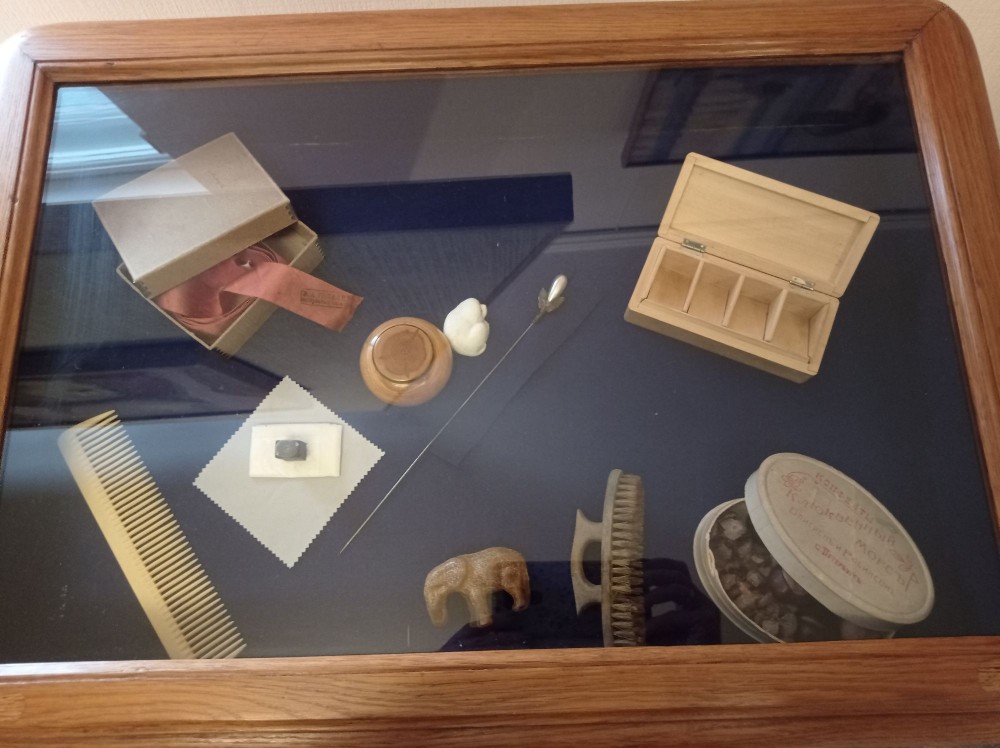
Elena Guro's personal belongings
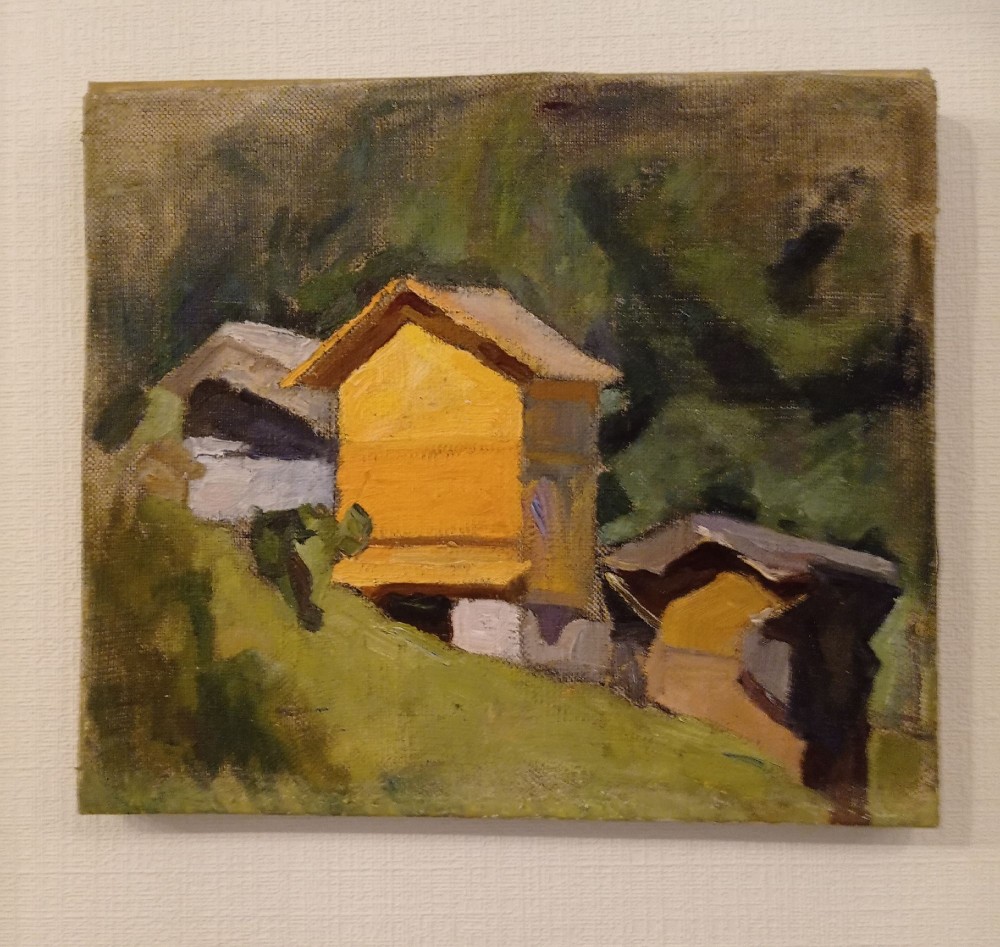
Guro. Hives. Etde 1902
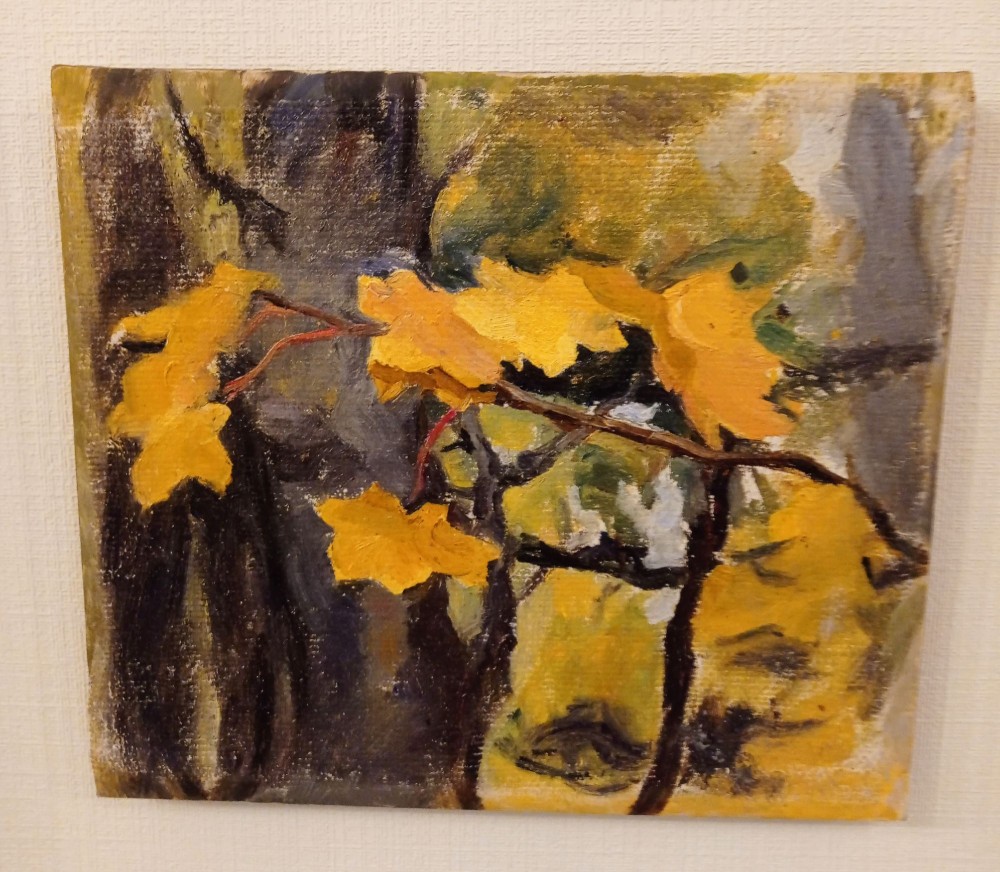
Guro. Maple branch. 1895
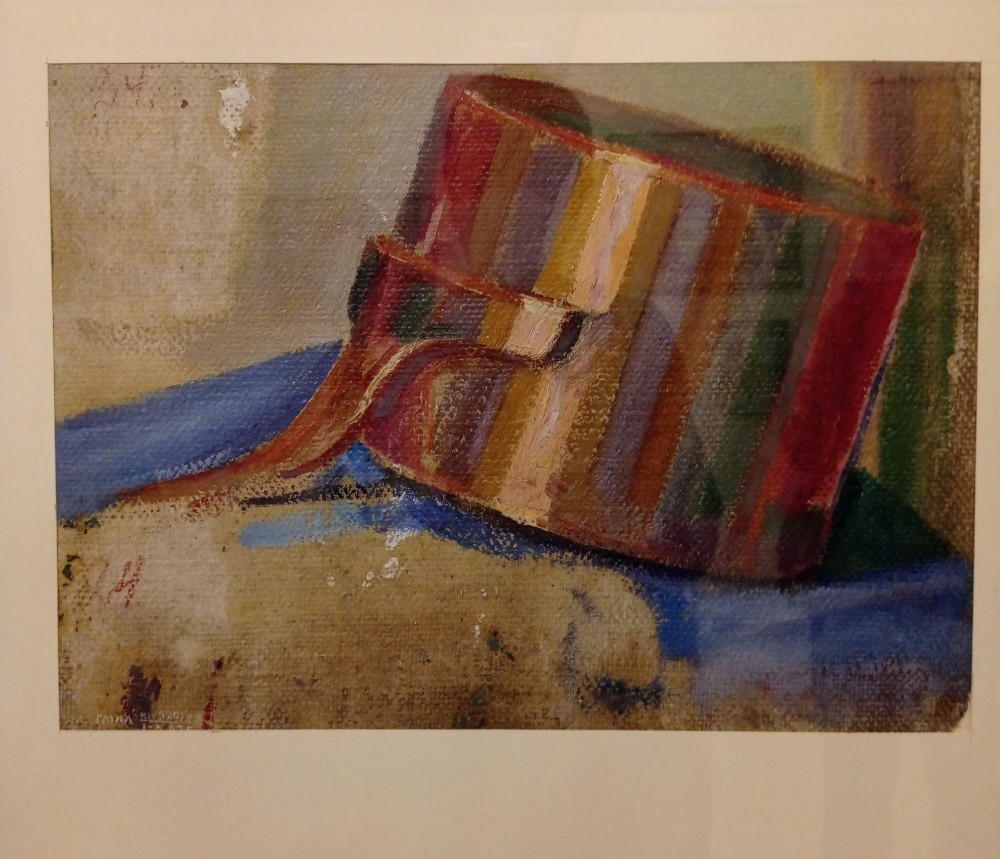
Guro. Ladle. 1910s
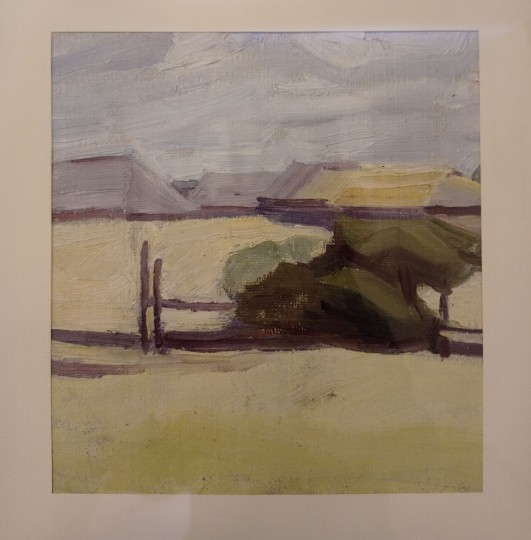
Guro. Roofs of houses. Etude. 1904
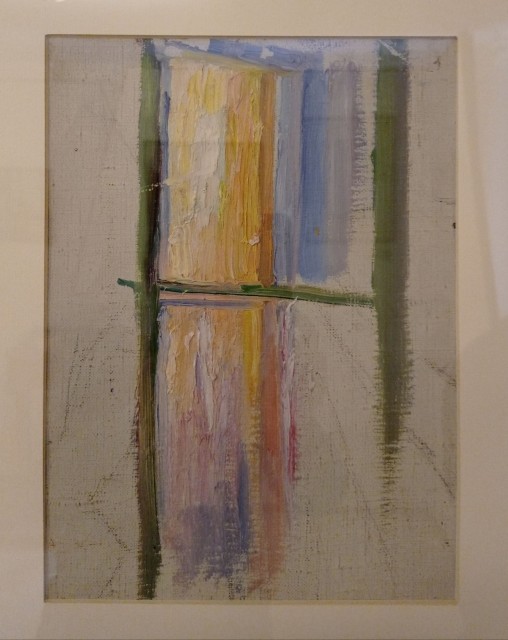
Guro. Window. Etude. 1906
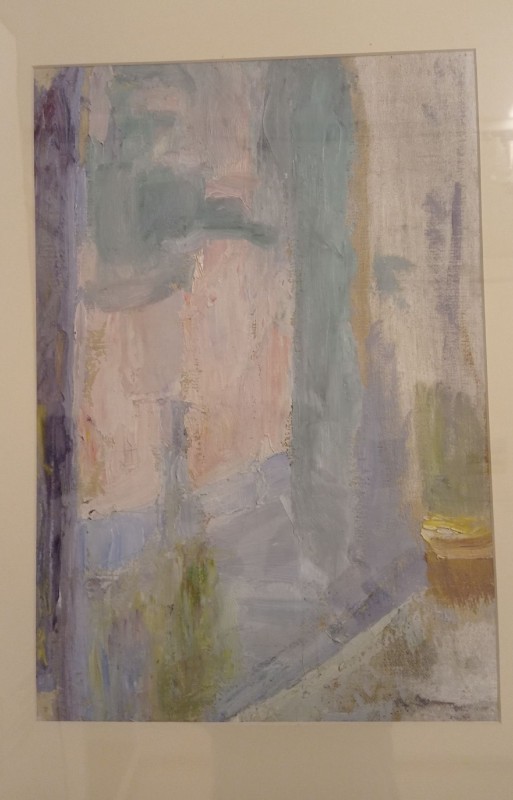
Guro. Window. Ivanovskaya. Etude. 1905
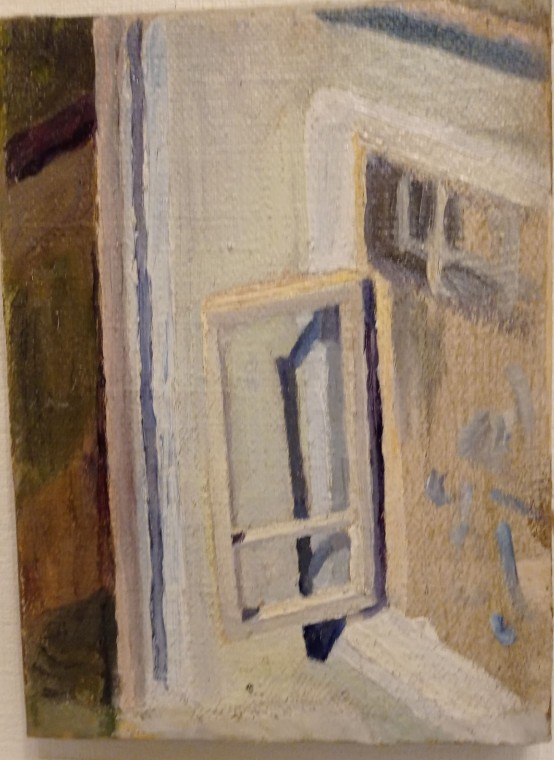
Guro. Opened window. Etude. 1890
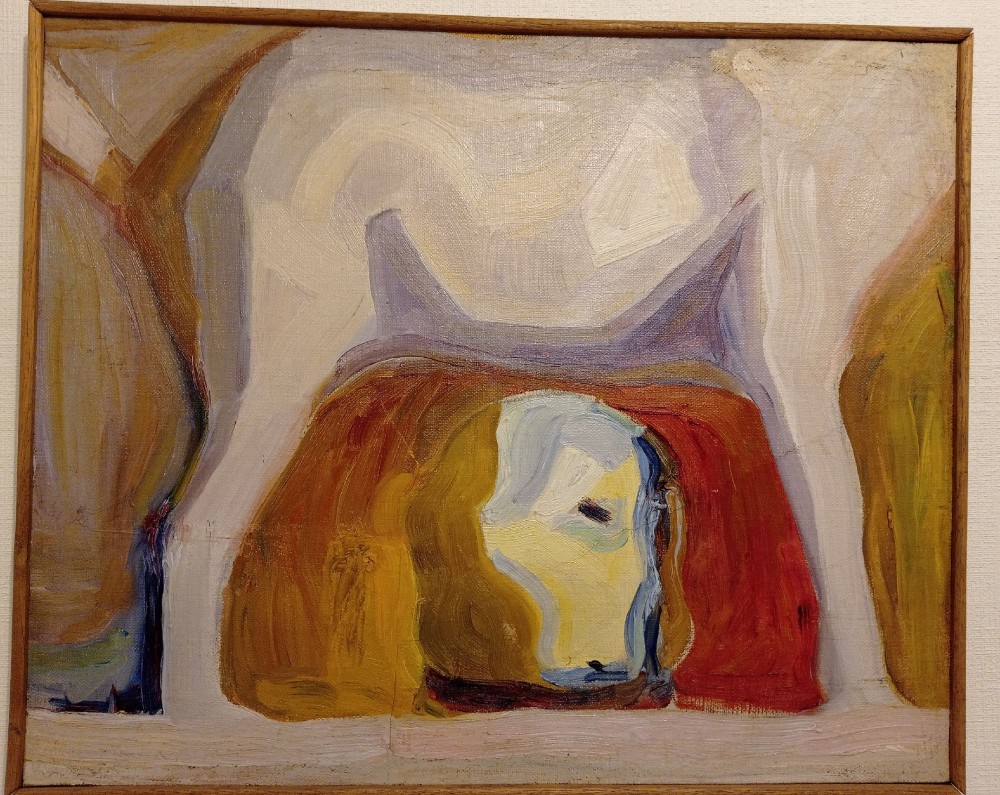
Guro. Grotto. 1910
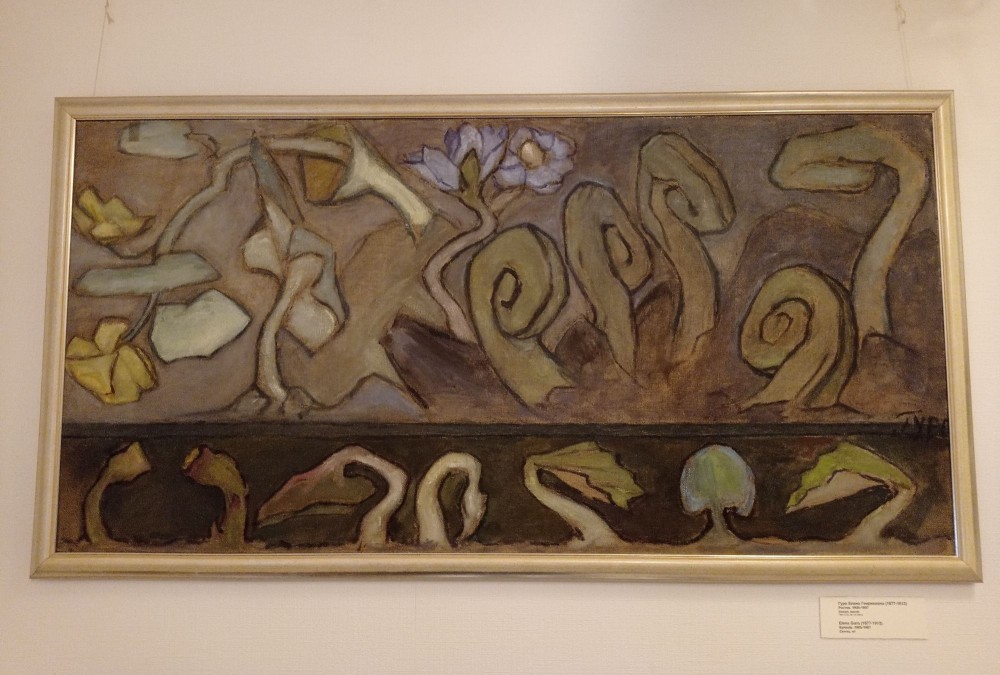
Guro. Sprouts. 1905-1907



One of Elena Guro's poems, which, according to Matyushin, characterized the creative work of the entire group:
Vetrogon, madman, flyer,
creator of spring storms,
thoughts excited sculptor,
chasing azure!
Listen, you crazy seeker,
rush, rush
rush through unchained
drunkard of storms.
The Futurist movement was gaining momentum. Passions boiled around. Futurists in the newspapers were called crazy, hooligans.
In the house on Pesochnaya, an atmosphere of creative concentration reigned, primarily thanks to Guro. She possessed a subtle poetic world, a rare ability to love, feel and understand nature. Wooden toys that she made according to her own sketches, books, a piano and a violin, an easel, paints and brushes, her beloved cat Bot – this created that unique aura that was mentioned by everyone who was here.

The poet V.V. Kamensky in his book The Way of the Enthusiast recalled: And we infinitely knew how to love life, the world and this wooden house on Pesochnaya, where Elena Guro lived in the nest of her words:
Share, share, share,
The share of you, quiet-quiet;
What am I in you, what are you in me,
And you tortured me.
On April 23, 1913, Elena Guro died of leukemia.
She was 35 years old.
Elena Guro died in her cottage in the town of Uusikirkko on the Karelian Isthmus (now the village of Polyana Vyborg district of the Leningrad region). They buried her there, in the Finnish cemetery; The grave was not preserved.
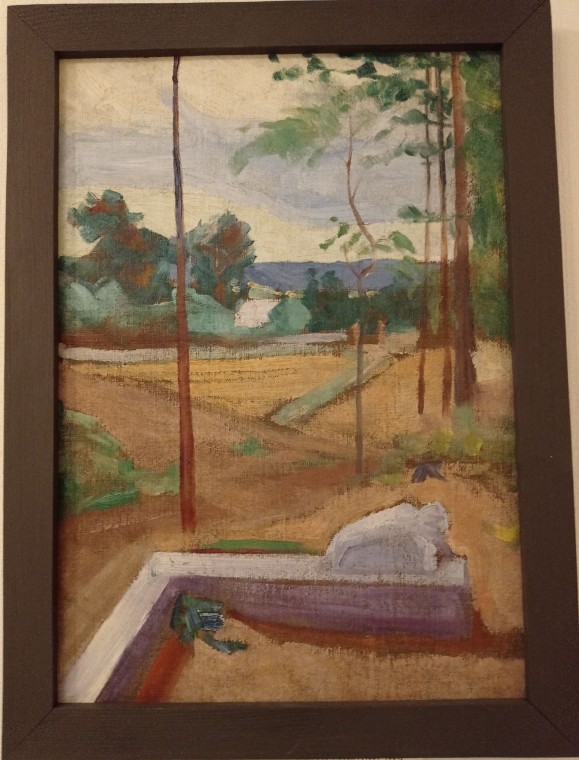
Matyushin. Guro grave. 1914-1916
Third wife.
Olga Konstantinovna Matyushina (1885-1974) was a writer.
Literary activities O.K. Matyushin began shortly before the war, writing memoirs about V. Mayakovsky; In 1941, she wrote memories of M. Gorky. Subsequent works by Matyushina-the story of Leningrad and Leningrad, who showed miracles of courage during the fascist blockade, historical and revolutionary novels, were written by her after she lost her eyesight. During the Great Patriotic War, Matyushin, having survived the blockade of Leningrad, lost her eyesight.
She lived in a house on Pesopochny until her death in 1974.

In 1968, it was visited by a young artist Sergei Sheff. He scrupulously recorded conversations with Olga Konstantinovna. She said:
“Immediately after the death of Mikhail Vasilyevich, I handed everything to the Russian museum. There were not only Matyushin paintings, but also Malevich, Filonov, Burliukov, ender. And then. A strange story. In the 52nd year, a truck arrives, and everything was unloaded and dumped here. I am old, I lost my sight in the blockade, the house is dilapidated. I somehow placed the paintings where I was able to. I was afraid that everything would die. Then, in the wooden sculptures of Matyushin, a bug started, the tree poured out. And I burned them. In the stove.
Well, in conclusion about the fate of the house.
In June 1977, by a decision of the Executive Committee of the Leningrad City Council of People's Deputies, house 10 on Professor Popov Street was transferred to the State Museum of the History of Leningrad. It was assumed that there would be its branch. But exactly 10 years later, in June 1987, the Executive Committee of the Lingiers Council decided On the creation of a museum exposition related to the life and activities of the literary and artistic intelligentsia of the XIX-XX centuries, which failed to implement.
The house burned twice. Then he was rebuilt, guided by the initial plans and numerous photographs, most of which were made by Matyushin himself, seriously carried away by a photograph.
In April 2004, the Academic Council of the State Museum of the History of St. Petersburg approved the concept of creating the Museumin Museum of the St. Petersburg avant-garde in the house.

On the ground floor, by the way, this was what happened




I tortured you of course)))
But on the ground floor there was an exhibition
Vladimir Greenberg.
I can tell about her.

And the St. Petersburg can visit her.
Yes. I am not ready to discuss Matyushin’s personal life. I don't know anything about his children. I was not interested. I don’t know why he divorced his first wife.
Surprisingly, this does not bother me.
I think that information for those who wish to learn more on the Internet.

